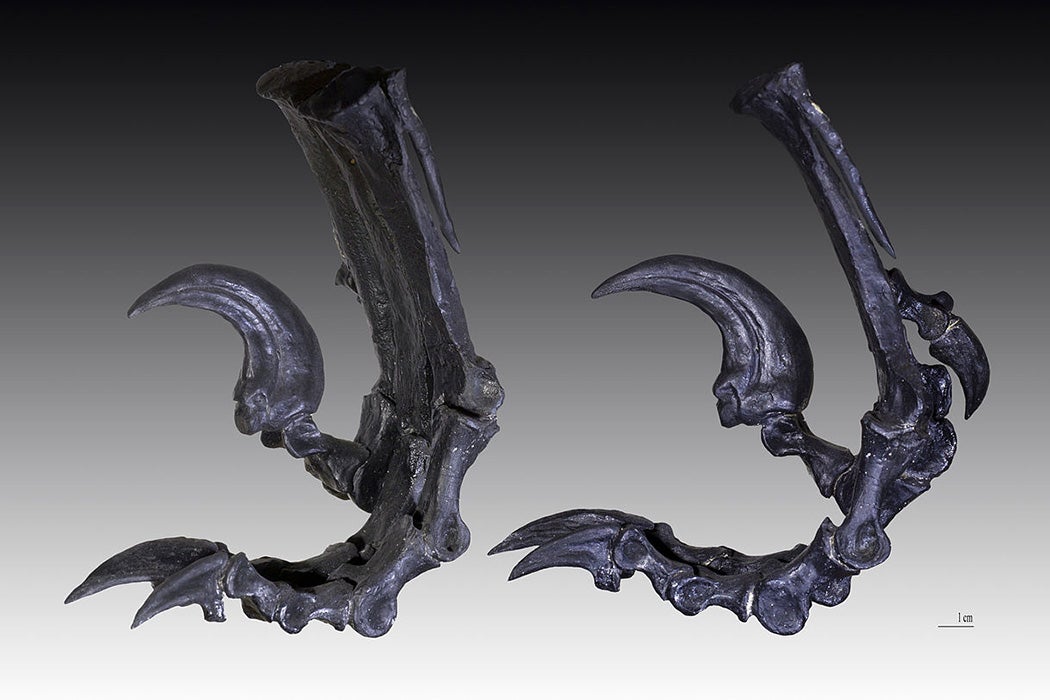At the end of a summer day in 1964, John Ostrom and his team of paleontologists found a set of claws buried in the hills of Montana. They returned the next morning to find a fierce talon connected to the well-preserved foot bones of a new dinosaur. Ostrom called the site “The Shrine,” and his fieldwork there would help reshape the way the world thought about dinosaurs.
Ostrom named the creature Deinonychus antirrhopus, meaning “counterbalancing terrible claw.” He believed that the talon implied a hunting style incompatible with the common view of dinosaurs, explains Jon Axline. Most paleontologists believed that dinosaurs were cold-blooded, slow reptiles. But to Ostrom, Deinonychus seemed like an “agile carnivore” that was “built for speed,” writes Axline.
This would have meant a high metabolism, leading Ostrom to compare Deinonychus to modern animals with similar traits, such as emus and ostriches. Robert T. Bakker was an undergraduate on Ostrom’s team in Montana. Writing in 1975, he noted that mounting evidence was creating a paradigm shift that was dubbed the “Dinosaur Renaissance.” Bakker believed that rather than being cold-blooded reptiles, dinosaurs were the warm-blooded ancestors of modern birds.
Ostrom had noticed similarities between Deinonychus and Archaeopteryx (a feathered ancestor of birds) and thought they might be related. These speculations gained support from fossil evidence over time, Bakker explained.
One line of evidence was in the bones themselves. Endothermic (warm-blooded) animals, Bakker writes, have bones with more structures that help form blood cells and maintain mineral balance. Bone in ectothermic (cold-blooded) animals also shows “growth rings” if the animals lived in places with more intense seasonal cycles. Bakker wrote that “fossilization often faithfully preserves the structure of the bone,” providing clues about dinosaur metabolism.
The world of many dinosaurs had a climate that varied by latitude. Looking at fossil structures across latitudes provided insight into whether the animals there were ectothermic or endothermic. This included insulating structures like hair—or feathers. Feathers on early dinosaurs, explained Bakker, were probably “not for powered flight or gliding, but primarily for insulation.”
Paleontologists also paid careful attention to the number of predator and prey animals they found at dig sites.
“A given prey population,” Bakker wrote, “can support an order of magnitude greater biomass of ectothermic predators than of endothermic predators.”
Weekly Newsletter
Endotherms require much more energy, he explains, and consume more prey animals. Bakker shared a number of graphs that showed that predator–prey ratios dropped over time. Based on this evidence, he proposed an alternative view of dinosaur evolution. In his view, the birds of today are the descendants of dinosaurs, equipped with adaptations that can be seen developing through the fossil record. Researchers are still investigating dinosaur evolution, and they continue to find evidence of the connection to birds.
The Dinosaur Renaissance rapidly influenced cultural perceptions of dinosaurs. Ostrom’s work on Deinonychus influenced the “Velociraptor” portrayal in the Jurassic Park novel, and Bakker got a shout-out in the movie. Reflecting our evolving understanding, the sequels featured more feathered dinosaurs.







